Window to
Radiant Beauty and
Confidence
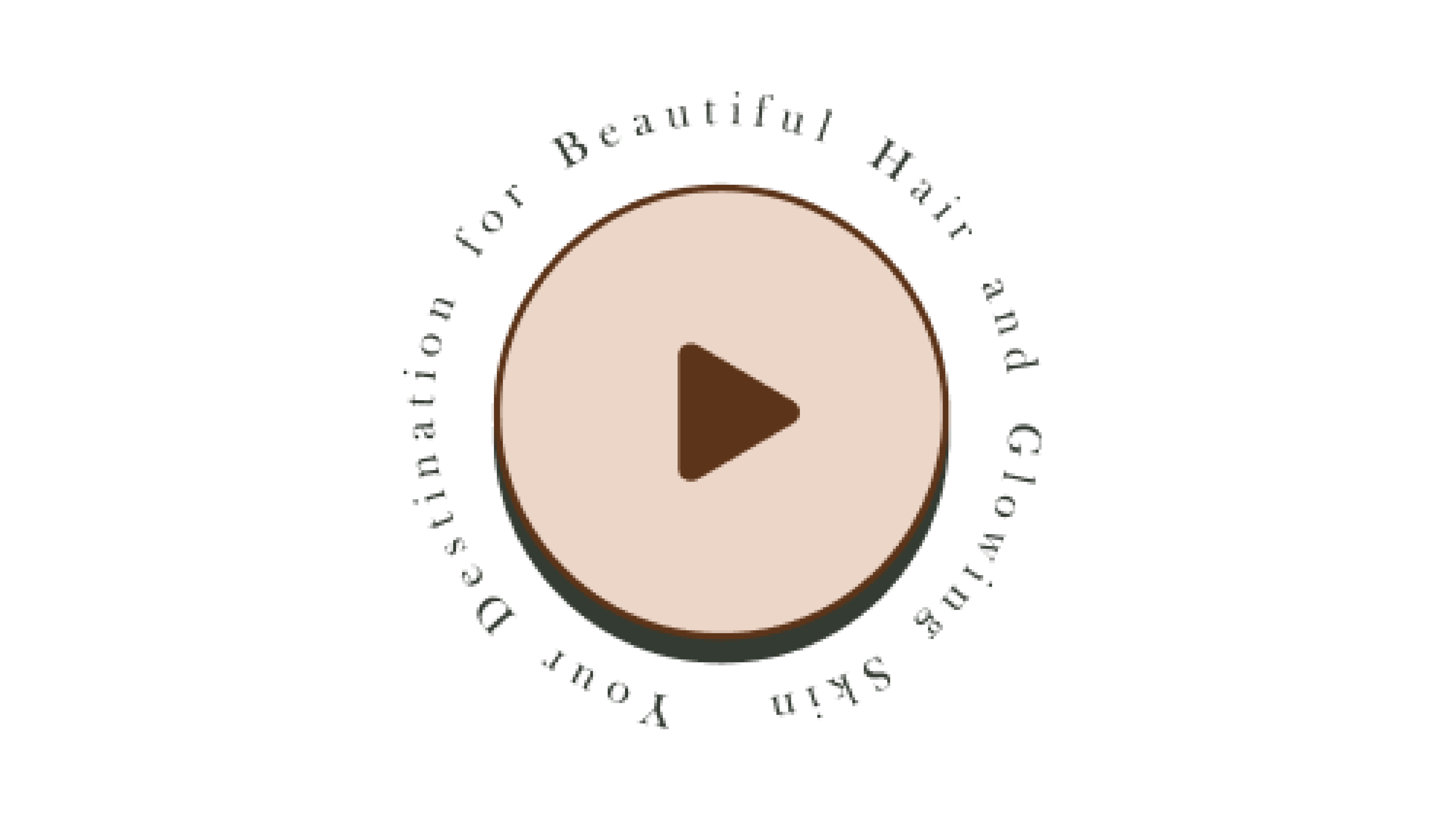
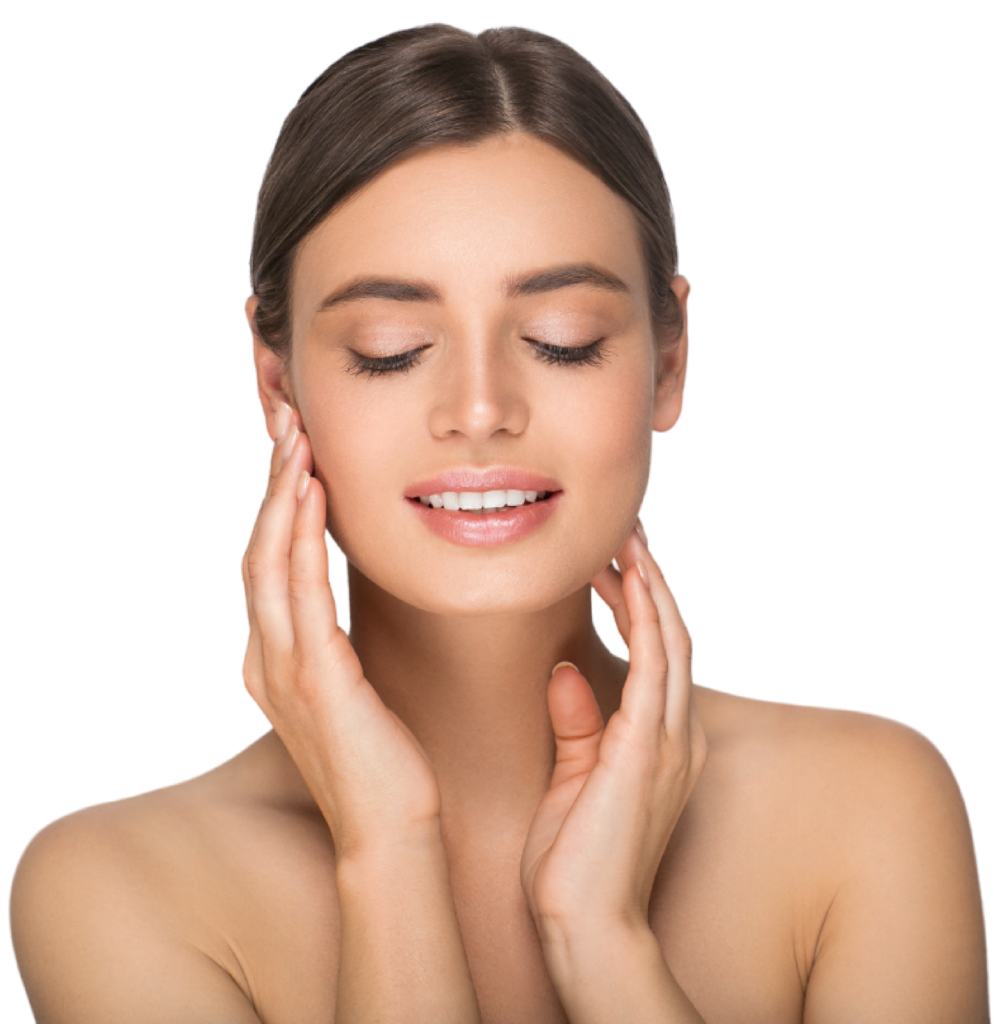
Skin care isn't a luxury; it's your daily commitment to nurturing your unique beauty.
Window to
Radiant Beauty and
Confidence


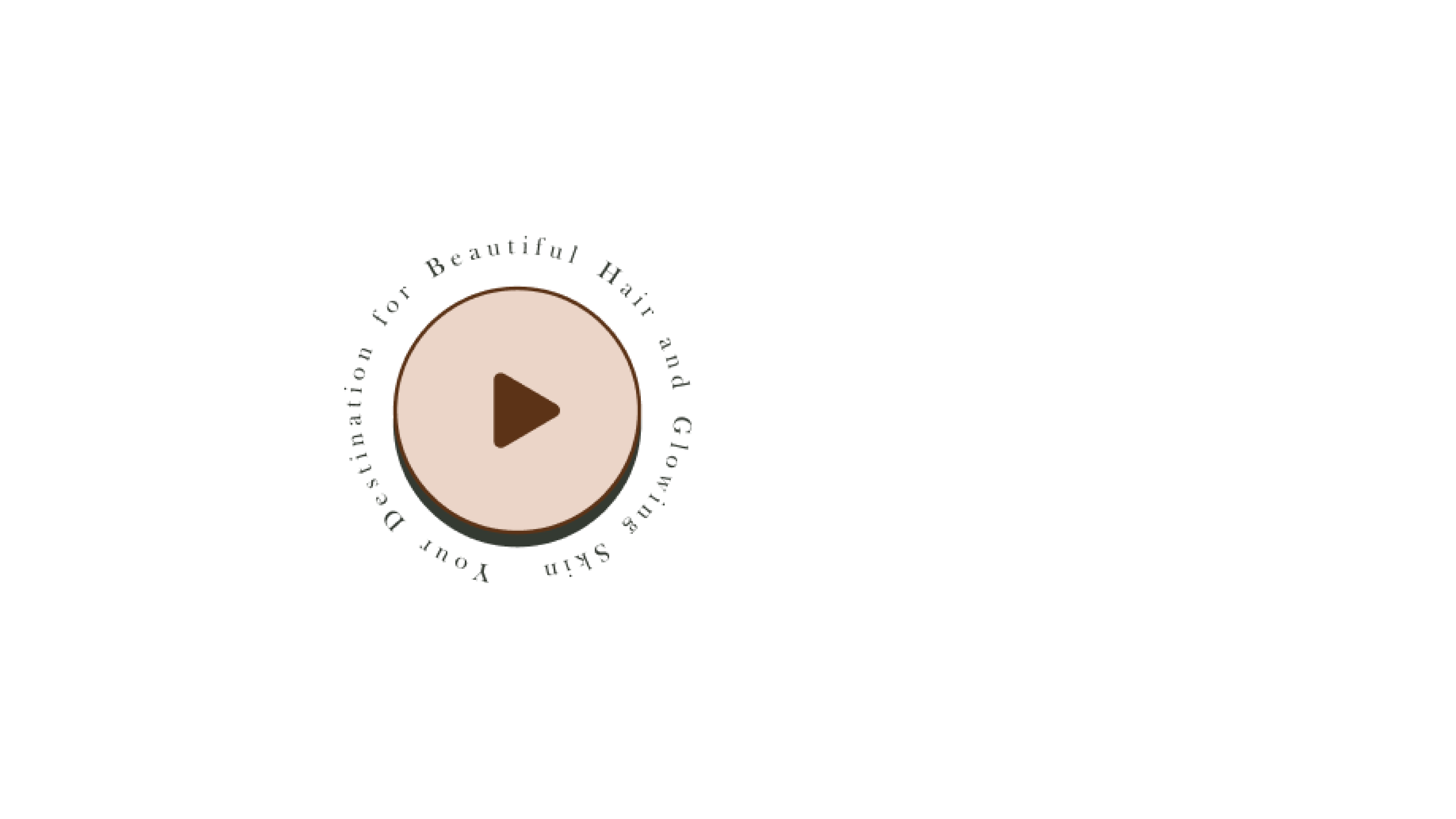
Skin care isn't a luxury; it's your daily commitment to nurturing your unique beauty.

- Enhance Beauty
- Enhance Confidence
- Enhance Beauty
- Enhance Confidence
- Enhance Beauty
- Enhance Confidence
- Enhance Beauty
- Enhance Confidence
- Enhance Beauty
- Enhance Confidence
- Enhance Beauty
- Enhance Confidence
- Enhance Beauty
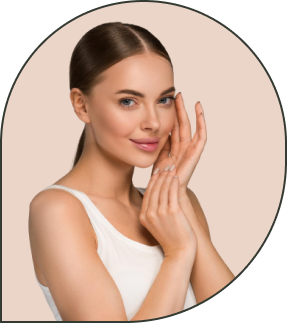

Our Journey at TriCare
Tricare is a renowned dermatology and dermatosurgery clinic that offers a wide range of advanced and safe dermatosurgery and aesthetic procedures. The clinic was founded by Dr. Archana.S.A, a highly experienced and skilled dermatologist who specializes in clinical dermatology, laser treatments, dermatosurgery and hair transformations. With many years of experience in the field, Dr. Archana is known for her expertise in delivering proven and effective techniques that help enhance natural beauty and boost self-confidence.
Located in Nallagandla, Hyderabad, Tricare is dedicated to providing exceptional care and personalized attention to each patient. The clinic is equipped with the latest technology and state-of-the-art facilities to ensure that patients receive the highest quality of care. Whether you are looking for a simple skin treatment or a complex cosmetic procedure, you can trust Tricare to deliver outstanding results.<be><br>
At Tricare, we are committed to excellence and has made it their mission to create a trusted destination for patients seeking safe and reliable cosmetic treatments. They take a holistic approach to beauty, nurturing natural beauty while helping patients enhance their self-confidence. With a focus on patient education and communication, Tricare ensures that patients are fully informed about their treatment options and can make informed decisions about their care.
Popular Procedures
At TRICARE, we understand the importance of healthy, radiant skin. Our team of experienced skincare professionals is dedicated to providing personalized and effective solutions tailored to your unique needs.
Clinical Dermatology
specialty that focuses on the
diagnosis and treatment of
conditions related to the skin, hair,
and nails.
Pigmentation Treatment
pigmentation involves a
combination of medical,
procedural, and skincare
approaches.
PRP/GFC
involves drawing a small amount of
a patient’s blood, processing it to
concentrate the platelets.
Laser Hair Reduction
laser hair removal, is a popular
cosmetic procedure designed to
reduce or eliminate unwanted hair
growth.
Hair Transplantation
procedure used to treat hair loss or
baldness. It involves moving hair
follicles from one part of the body.
Keloid/Lipoma Excision
scar tissue that can develop at the
site of a wound or injury. They
extend beyond the original wound
area.
Vitiligo Surgery
a small section of normally
pigmented skin and grafts it onto
an area affected by vitiligo.
Earlobe Repair
procedure designed to correct
damage or deformities in the
earlobe.
Nail Surgery
procedure performed on the nails
or the surrounding tissues to
address various conditions or
problems affecting the nails.
Our Videos



Beauty and Wellness Insights

Understanding Hair Loss Across Different Ages and Genders: Causes and Solutions
Hair loss affects many people due to various reasons. Genetics, hormones (like during pregnancy or menopause), and conditions such as PCOS can cause it. Medical issues like alopecia areata, thyroid problems, and infections like ringworm are culprits too. Treatments like chemotherapy, certain meds, and poor nutrition can lead to hair loss. Stress can make hair fall out prematurely, while tight hairstyles and harsh treatments damage hair.
Aging also plays a role as hair growth slows. To tackle hair loss, it’s important to identify the cause through medical evaluation and customize treatment accordingly.
1. Genetic Factors
Androgenetic Alopecia: Also known as male-pattern baldness or female-pattern hair loss, this is the most common cause of hair loss, which is
influenced by genetics and sex hormones. It manifests as a receding hairline and bald spots in men and thinning hair along the crown in
women.
2. Hormonal Changes
Pregnancy, Childbirth, and Menopause: Women may experience hair loss during or after pregnancy due to hormonal changes. Menopause can also lead to thinning hair because of reduced levels of certain
hormones. Polycystic Ovary Syndrome (PCOS): A hormonal disorder that can cause hair thinning and hair loss on the scalp but increased hair growth on other parts of the body.
2. Medical Conditions
Alopecia Areata: An autoimmune condition where the immune system attacks hair follicles, leading to sudden, patchy hair loss. Scalp Infections: Conditions like ringworm can invade the hair and scalp,leading to scaly patches and hair loss.
Thyroid Disorders: Both hyperthyroidism and hypothyroidism can cause hair loss due to the critical role of thyroid hormones in hair growth and structure.
3. Medications and Treatments
Cancer Treatment: Chemotherapy and radiation therapy can cause hair loss as they not only target cancer cells but can also affect
healthy cells, including those responsible for hair growth. Other Medications: Drugs used for arthritis, depression, heart problems, and high blood pressure can sometimes cause hair loss as a side effect.
5. Nutritional Deficiencies
Lack of Protein, Iron, and Other Nutrients: A diet lacking in essential nutrients can lead to hair loss. Protein and iron are particularly important
for hair health, as well as vitamins such as vitamin D, vitamin B12, and zinc.
6. Physical and Emotional Stress
Telogen Effluvium: Significant stress can push hair follicles into a resting phase, leading to hair shedding and thinning several months after the
stressful event.
Trichotillomania: A psychological disorder characterized by the urge to pull out one’s hair, leading to hair loss.
7. Hairstyles and Treatments
Traction Alopecia: Hairstyles that pull the hair tight, such as ponytails, braids, and cornrows, can cause hair loss.Heat and Chemicals: Frequent use of heat styling tools and chemical
treatments can weaken the hair, leading to breakage and loss.
8. Aging
Natural Thinning: Hair density and volume can decrease naturally with age due to a decrease in the rate of hair growth and the hair follicles
becoming dormant.
Hair Loss in Adults: Gender-Specific Causes
For Women:
Telogen Effluvium: A temporary hair loss typically occurring after pregnancy,
major surgery, drastic weight loss, or extreme stress.
Androgenetic Alopecia (Female Pattern Hair Loss): Thinning hair primarily on
the top and crown of the scalp. It's influenced by hormonal changes and
genetics.
Polycystic Ovary Syndrome (PCOS): A hormonal disorder that can lead to thinning hair, hair loss on the scalp, and increased hair growth on the face and body.
Solutions:
Treatments may include topical treatments like minoxidil, hormonal therapy, lifestyle changes, PRP , laser treatment , mesotherapy or, in some cases, hairtransplant surgery.
For Men:
Androgenetic Alopecia (Male Pattern Baldness): Characterized by a receding
hairline and/or balding on the top of the head. It’s the most common cause of hair loss in men, influenced by genetics and male hormones.
Telogen Effluvium: Similar to women, men can also experience this temporary
form of hair loss due to stress, illness, or dietary deficiencies.
Alopecia Areata: Although less common, this autoimmune condition also
affects men, leading to sudden, patchy hair loss.
Solutions:
Treatment options include minoxidil, finasteride (a prescription tablet), lifestyle adjustments, PRP, GFC, laser treatment and in advanced cases, hair transplantation.
Hair loss happens for many reasons and can be different for each person. Factors like age, gender, genetics, health, and lifestyle all play a
part. It’s important to figure out what's causing the hair loss for each person. Seeing a healthcare provider can help find the reason and
decide on the best treatment. With the right help, people can manage or lessen the effects of hair loss, no matter how old they are or whether they’re male or female.
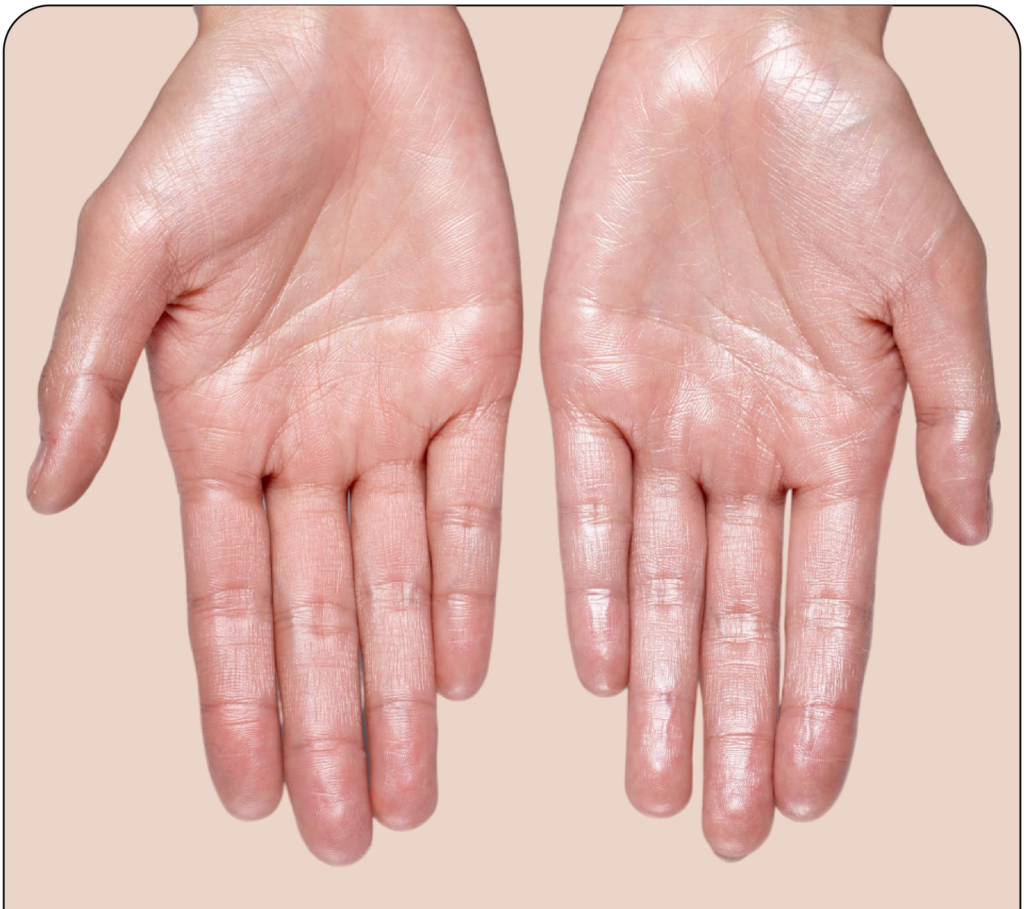
Understanding Excessive Sweating (Hyperhidrosis) and Effective Treatment Options
Excessive sweating, medically known as hyperhidrosis, is a common condition characterized by sweating more than what’s necessary to regulate body temperature. While sweating is a normal bodily function, hyperhidrosis can significantly impact one’s quality of life, leading to embarrassment, social anxiety, and discomfort. In this blog, well explore the causes, symptoms, and treatment options available for managing hyperhidrosis.
What is Hyperhidrosis?
Hyperhidrosis is a condition characterized by excessive sweating that goes beyond what’s needed to regulate body temperature. Hyperhidrosis can occur in specific areas of the body, such as the palms, soles, underarms, or face, or it can be generalized, affecting the entire body. This condition can occur regardless of environmental factors, emotional state, or physical activity level.
Causes of Hyperhidrosis:
Primary Hyperhidrosis:
Genetics: Primary hyperhidrosis often runs in families, suggesting a genetic predisposition.
Overactive Sweat Glands: In individuals with primary hyperhidrosis, the sweat glands become
overactive, producing more sweat than necessary.
Secondary Hyperhidrosis:
Underlying Medical Conditions: Certain medical conditions, such as thyroid disorders, diabetes,
menopause, fever and infections, heart disease, spinal cord injuries, obesity, panic disorders,
certain medications etc. can cause secondary hyperhidrosis.
Symptoms of Hyperhidrosis:
Visible Sweating: Excessive sweating that soaks through clothing or forms visible droplets on the
skin.
Difficulty in day to day activities like loss of grip while holding pen, sweaty foot leading to smelly
shoes etc.
Skin Issues: Increased risk of skin infections like fungal, sweat dermatitis particularly in areas
prone to sweating.
Social and Emotional Impact: Embarrassment, social anxiety, and avoidance of social situations due to concerns about sweating.
Treatment Options for Hyperhidrosis:
The choice of treatment depends on the severity of the condition, the affected body area, and the
patient’s preferences.
1. Antiperspirants:
Over-the-Counter Antiperspirants: Aluminum-based antiperspirants can help reduce sweating by blocking sweat ducts.
2. Prescription Medications:
Anticholinergic Drugs: Medications that block the neurotransmitter acetylcholine can reduce
sweating. These are typically prescribed for severe cases of hyperhidrosis.
3. Botulinum Toxin (Botox) Injections:
Botulinum Toxin Injections: Injecting small amounts of Botox into the affected area can
temporarily block the nerves that trigger sweat production.
4. Iontophoresis:
Iontophoresis: This procedure involves passing a mild electrical current through water to
temporarily block sweat glands; activity.
5. Oral Medications:
Antidepressants: Certain antidepressants, such as selective serotonin reuptake inhibitors
(SSRIs), may be prescribed to help reduce sweating.
6. Surgery:
Surgical Options: In severe cases of hyperhidrosis that do not respond to other treatments, surgical procedures such as sympathectomy (nerve surgery) may be considered.
Hyperhidrosis can significantly impact one’s quality of life, but effective treatment options are available to manage the condition. It’s essential for individuals experiencing excessive sweating to consult with healthcare professionals to determine the underlying cause and explore appropriate treatment options tailored to their needs. With the right approach, it’s possible to reduce sweating and improve quality of life for those living with hyperhidrosis.

Understanding Causes and Effective Remedies Of Dark Circles.
Dark circles under the eyes can be a pesky beauty woe that affects people of all ages and skin types. Whether caused by genetics, lifestyle factors, or inadequate sleep, these shadows can make you appear tired and aged. However, fear not! There are several remedies and lifestyle changes you can incorporate to help minimize their appearance
and restore a refreshed look to your eyes.
Understanding the Causes:
Dark circles are often a result of various factors, including:
Genetics: Some individuals are predisposed to having darker pigmentation under their eyes due to genetics.
Thinning Skin: The skin under the eyes is delicate and tends to become thinner
with age, making underlying blood vessels more visible.
Lack of Sleep: Not getting enough sleep can lead to blood vessel dilation and pooling of blood under the eyes, resulting in dark circles.
Allergies: Seasonal allergies or allergic reactions to certain products can cause inflammation and discoloration under the eyes.
Dehydration: Insufficient hydration can make the skin under the eyes appear dull and sunken, exacerbating the appearance of dark circles.
Sun Exposure: Excessive exposure to the sun’s harmful UV rays can increase melanin production, leading to hyperpigmentation under the eyes.
Tear Trough: This is due to aging, loss of fat, thining pf overlying skin leading to hallowness
Effective Remedies:
Get Sufficient Sleep: Aim for 7-9 hours of quality sleep each night to allow your body to repair and rejuvenate. Elevating your head with an extra pillow while sleeping can help prevent fluid accumulation under the eyes.
Stay Hydrated: Drink plenty of water throughout the day to keep your skin hydrated and plump. Limiting alcohol and caffeine intake, which can dehydrate the body, is also beneficial.
Protect Your Skin: Use a broad-spectrum sunscreen with SPF 30 or higher to shield the delicate skin under your eyes from UV damage.
Healthy Diet: Incorporate foods rich in antioxidants, vitamins C and E, and omega-3 fatty acids into your diet to support skin health and reduce inflammation.
Topical Treatments: Look for eye creams or serums containing ingredients such as vitamin C, retinol, caffeine, depigmenting creams and hyaluronic acid, which can help brighten the under-eye area, reduce puffiness, and improve skin elasticity.
Cold Compresses: Applying a cold compress to the eyes can constrict blood vessels, reduce swelling, and temporarily diminish the appearance of dark circles. Procedures- Chemical peels, lasers, tear trough correction with dermal fillers, PRP are other treatment options While dark circles may seem stubborn, they are often manageable with the right approach. By addressing underlying causes such as lack of sleep, dehydration, and sun exposure, and incorporating effective remedies into your skincare routine, you can significantly reduce their appearance and achieve a brighter, more youthful-looking under-eye area.
Remember, consistency is key, so stick to your skincare regimen and be patient for visible results. With dedication and proper care, you can bid farewell to those pesky dark circles and embrace a radiant, well-rested complexion.

Unveiling the Mystery: 5 Reasons Your Skincare Routine Isn't Working
You diligently follow your skincare routine, investing time and money into achieving that coveted radiant complexion. However, despite your efforts, you might find that your skin isn’t responding as expected. Before you give up or switch to a new set of products,
consider these five common reasons why your skincare routine may not be delivering the desired results.
Mismatched Products: Using skincare products that are not suitable for your skin type can lead to ineffective results or even exacerbate existing issues.
Ensure that your products are tailored to address your specific skin concerns, whether it’s dryness, acne, or sensitivity. Inconsistent Application: Consistency is key when it comes to skincare. Skipping steps or sporadically applying products can hinder their effectiveness. Establish a routine and stick to it to allow your skin to adapt and benefit from the active ingredients.
Not Giving It Enough Time: Many skincare products require time to deliver visible results. Be patient and give your routine at least a few weeks before expecting significant changes. Remember, skincare is a marathon, not a sprint.
External Factors: Environmental stressors such as pollution, UV exposure, and fluctuating weather conditions can impact the efficacy of your skincare routine.
Incorporate additional protective measures like sunscreen and antioxidants to shield your skin from damage.
Underlying Health Issues: Sometimes, persistent skincare concerns may be indicative of underlying health issues like hormonal imbalances or dietary deficiencies. Consult a dermatologist or healthcare professional to rule out any medical conditions that may be affecting your skin’s health.
Troubleshooting your skincare routine requires a holistic approach. Assess your products, application techniques, and lifestyle factors to identify potential culprits. With patience, consistency, and a bit of detective work, you can unlock the secrets to a skincare routine that truly works for you.
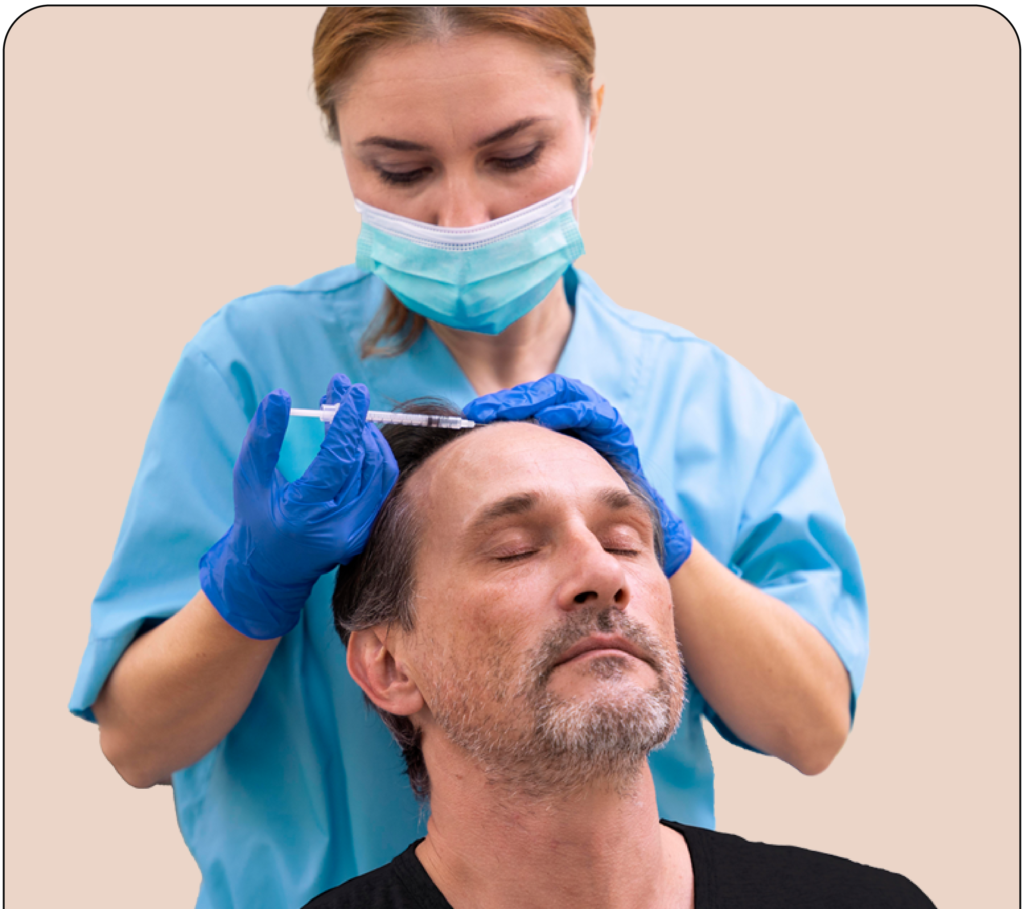
The Benefits and Process of PRP for Hair Loss: What to Expect
Hair loss can be a distressing experience, impacting self-esteem and confidence. Fortunately, there are advanced treatments available to combat this issue. One such treatment is PRP (Platelet-Rich Plasma) therapy. PRP has gained popularity due to its natural and effective approach to hair restoration. This blog will explain PRP therapy, how it works, the treatment process, and the expected benefits.
How PRP Works: The Science Behind It
PRP therapy involves using your blood to stimulate hair growth. The science behind it is relatively straightforward. Blood comprises different components, including red blood cells, white blood cells, plasma, and platelets. Platelets are rich in growth factors that can promote healing and regeneration.
In PRP therapy, a small sample of your blood is drawn and placed in a centrifuge. This machine spins the blood at high speeds, separating the platelets from the other components. The result is a concentrated platelet-rich plasma that is then injected into your scalp. These growth factors in the PRP stimulate the hair follicles, encouraging them to grow healthier, stronger hair.
The PRP Treatment Process: Step-by-Step
- Consultation: The first step is a consultation with a qualified medical professional to assess your hair loss and determine if PRP is suitable for you.
- Blood Draw: A small amount of blood, typically around 10-20ml, is drawn from your arm.
- Centrifugation: The blood sample is placed in a centrifuge, which spins it rapidly to separate the platelets and plasma from the rest of the blood components.
- Preparation of PRP: The concentrated PRP is collected into a syringe for injection.
- Scalp Preparation: The treatment area on your scalp is cleaned, and a topical anesthetic may be applied to minimize discomfort.
- PRP Injection: The PRP is injected into the areas of the scalp where hair thinning or loss is most evident. The injections are spaced out across the scalp to ensure even distribution.
Benefits of PRP for Hair Restoration
Non-Surgical Solution
One of the most significant advantages of PRP therapy is that it is a non-surgical solution. Unlike hair transplant surgery, PRP does not involve incisions or stitches. This makes the procedure less invasive and reduces the risk of complications.
Minimal Downtime
PRP therapy requires minimal downtime. Most patients can return to their daily activities immediately after the treatment. Some minor swelling or discomfort may occur at the injection sites, but this usually resolves within a few days.
Natural Results
Since PRP uses your blood, the treatment is entirely natural. There are no foreign substances or chemicals involved, reducing the risk of allergic reactions or side effects. The results are also gradual, which means your hair growth will look natural and not overly sudden or artificial.
Who is a Good Candidate for PRP?
PRP therapy is suitable for both men and women experiencing hair thinning or hair loss. Ideal candidates are those in the early stages of hair loss, as PRP is most effective when hair follicles are still active. It is also a good option for individuals who prefer a non-surgical approach to hair restoration.
However, PRP may not be suitable for everyone. People with certain medical conditions, such as blood disorders or chronic liver disease, may not be good candidates for this treatment. A thorough consultation with a medical professional will help determine if PRP is right for you.
Conclusion
PRP therapy for hair loss is an innovative and effective treatment that harnesses the power of your body’s natural growth factors. It offers a non-surgical solution with minimal downtime and natural results. If you’re struggling with hair loss and looking for a safe and effective treatment option, PRP therapy at Tricare Clinic in Nallagandla could be the answer. Consult with a qualified professional to see if PRP is right for you and take the first step towards restoring your hair and confidence.
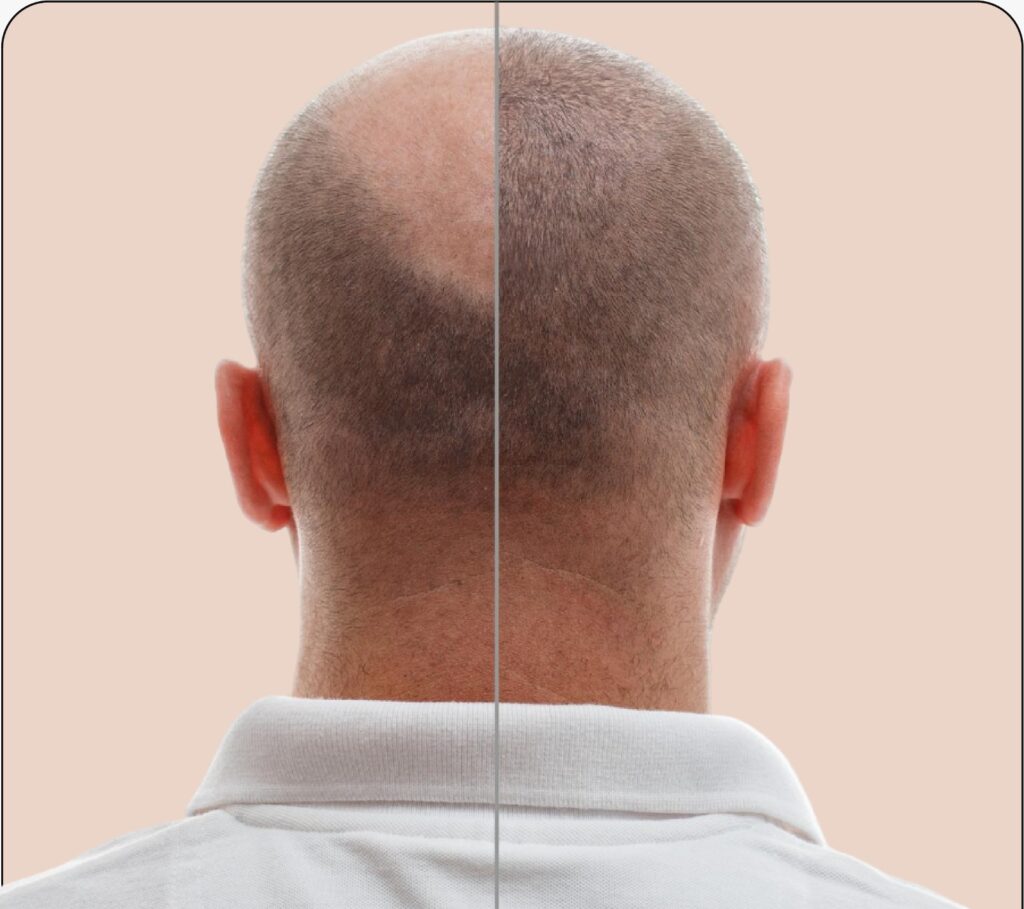
Hair Transplantation and Your Journey to Confidence: What You Need to Know
Hair loss can be a distressing experience, impacting both your appearance and self-confidence. Many people who suffer from hair loss feel self-conscious and less attractive, which can affect their social interactions and overall well-being. Thankfully, hair transplantation offers a viable solution to restore not only your hair but also your confidence and self-esteem.
Hair transplantation involves moving hair follicles from one part of the body, typically the back or sides of the scalp, to the balding or thinning areas. There are two main techniques: Follicular Unit Transplantation (FUT) and Follicular Unit Extraction (FUE).
● FUT involves removing a strip of scalp from the donor area and dissecting it into individual follicular units for transplantation.
● FUE involves extracting individual hair follicles directly from the donor area and transplanting them to the recipient area.
Both methods are effective, but the choice depends on individual needs and the surgeon’s recommendation.
Preparing for a Hair Transplant: What to Do Before the Procedure
Preparation is key to ensuring a successful hair transplant. Here are some steps to follow:
Consultation: Schedule a consultation with a qualified hair transplant surgeon to discuss your goals, assess your condition, and determine the best technique for you.
Medical Evaluation: Undergo a thorough medical evaluation to ensure you are a good candidate for the procedure.
Pre-Procedure Instructions: Follow the surgeon’s pre-procedure instructions, which may include avoiding certain medications and refraining from smoking and alcohol.
The Hair Transplant Procedure: What Happens During Surgery
On the day of the surgery, you will be given local anesthesia to numb the donor and recipient areas. The procedure typically involves the following steps:
Harvesting Donor Hair: Depending on the chosen technique (FUT or FUE), the surgeon will either remove a strip of scalp or individual follicles from the donor area.
Preparing the Grafts: The harvested hair follicles are carefully dissected and prepared for transplantation.
Transplanting the Grafts: Tiny incisions are made in the recipient area, and the prepared hair follicles are meticulously placed into these incisions.
The procedure can take several hours, depending on the number of grafts being transplanted.
Post-Transplant Care: Ensuring the Best Results
Proper post-transplant care is crucial for achieving the best results. Follow these guidelines:
Follow-Up Appointments: Attend all scheduled follow-up appointments to monitor your progress.
Avoid Physical Strain: Avoid strenuous activities and heavy lifting for a few weeks to prevent complications.
Care for the Transplanted Area: Keep the transplanted area clean and follow the surgeon’s instructions for washing and caring for your scalp.
Timeline of Hair Growth After Transplantation
Hair growth after a transplant follows a specific timeline:
● First Few Weeks: The transplanted hair may shed, which is normal and part of the healing process.
● 3-4 Months: New hair begins to grow, but it may be fine and thin initially.
● 6-12 Months: Hair continues to grow and thicken, with full results visible after about a
year.
Addressing Common Fears and Myths About Hair Transplants
Many people have concerns and misconceptions about hair transplants. Common myths include:
● Painful Procedure: Modern techniques and anesthesia make the procedure virtually painless.
● Unnatural Results: Skilled surgeons can achieve natural-looking results that blend seamlessly with your existing hair.
● Permanent Scars: Advanced techniques like FUE minimize scarring, making it virtually undetectable.
Choosing the Right Clinic and Surgeon for Your Hair Transplant
Selecting the right clinic and surgeon is essential for a successful hair transplant. Consider these factors:
● Experience and Credentials: Choose a surgeon with extensive experience and a proven track record.
● Patient Reviews and Testimonials: Look for positive reviews and testimonials from previous patients.
● Before and After Photos: Review the surgeon’s portfolio of before and after photos to assess the quality of their work.
Conclusion: Reclaim Your Confidence with a Successful Hair Transplant
A successful hair transplant can transform not only your appearance but also your confidence and self-esteem. By understanding the process, preparing adequately, and choosing the right clinic, you can embark on a journey to regain your hair and boost your confidence. Remember, the key to a successful hair transplant lies in the expertise of your surgeon and your commitment to post-operative care. Reclaim your confidence and enjoy the benefits of a fuller head of hair.
Subscribe To Receive Exclusive
News & Offers
Be the first to know about the biggest stories as they break
Phone
+91-62813 87018
Address
402, Krishna arcade, 7-1/92/B/HIG, 4th Floor, Nallagandla, above Pure O Natural, opposite Aparna Sarovar Grande Road, Serilingampalle (M), Hyderabad, Telangana 500019
Reach us on email
tricareskinclinics@gmail.com

